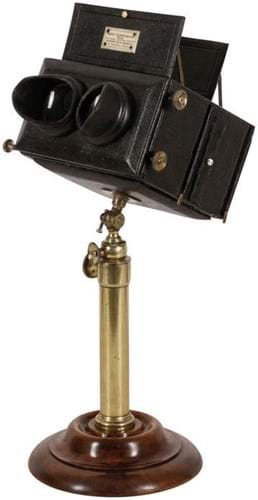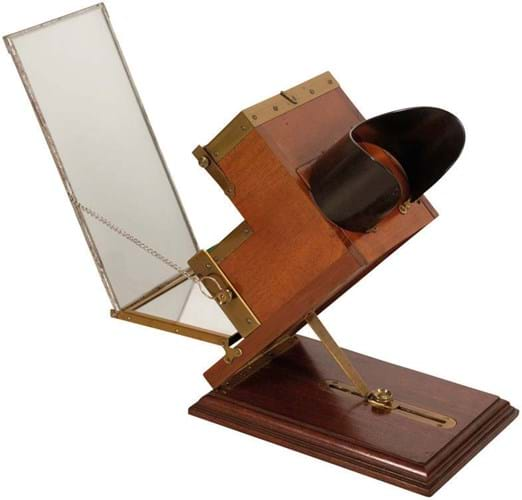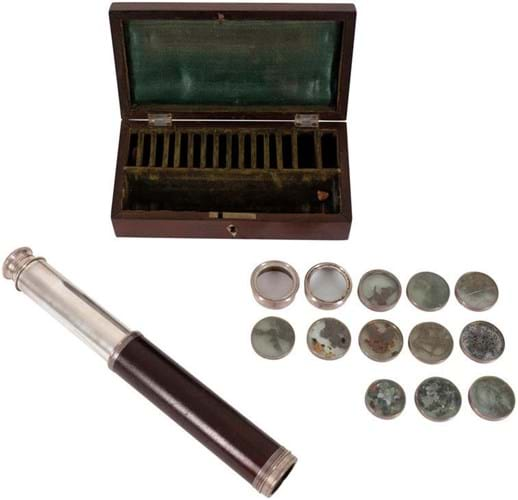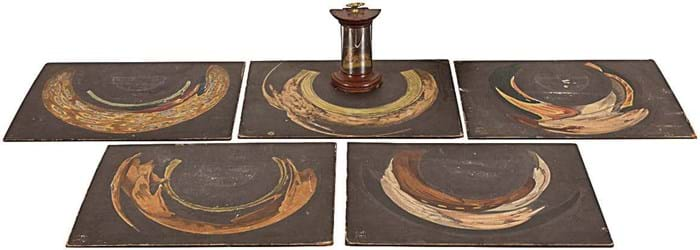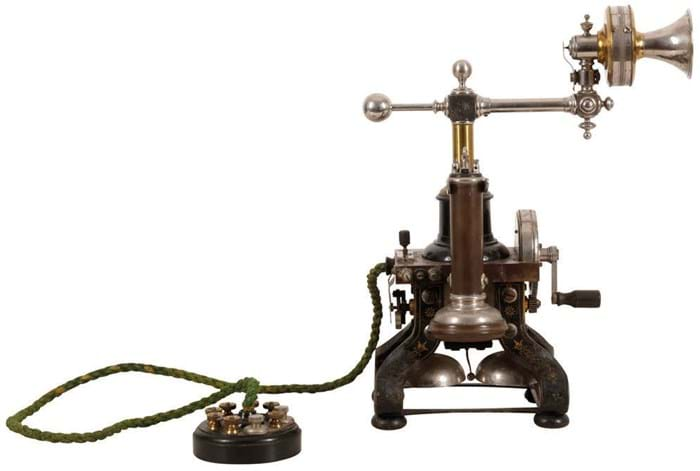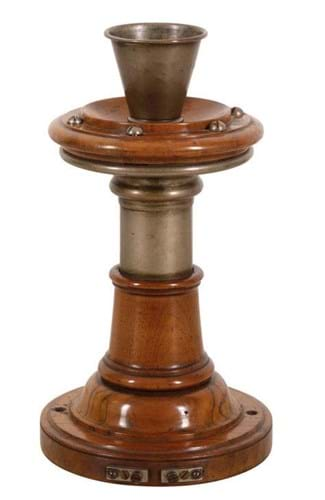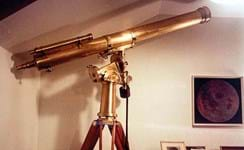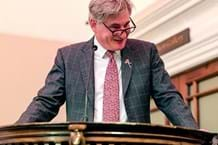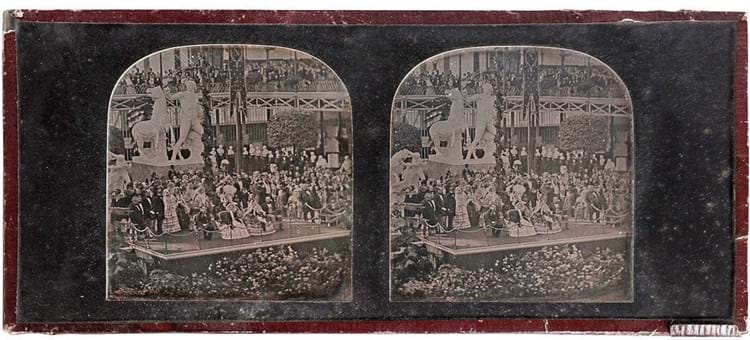
The rare silk banner proclaiming the abolition of slavery in the British empire in 1834 sold at £11,500 (ATG No 2577) as part of a January 18 event at Chiswick Auctions (25% buyer’s premium) was just one of many ‘cabinet of curiosity’ items assembled by a London dealer in mechanical and scientific antiques.
They were collected in the 1980s-90s during frequent visits to antiques fairs, markets and shops in the UK, Europe and the US.
Most had been in storage for 20 years, although had been admired via a website devoted to the collection. The collector’s partner recalls he “always regretted he wasn’t born during the reign of Queen Victoria”.
The queen herself was the subject of a stereoscopic daguerreotype dated April 20, 1855. Taken by official photographers Negretti & Zambra, it shows Victoria and Prince Albert escorting Napoleon III and the Empress Eugénie around the Crystal Palace.
The iron and glass venue, centrepiece of the Great Exhibition held in London’s Hyde Park in 1851, had recently been sold, dismantled and rebuilt at a new site in the district of Sydenham in south-east London.
Paintings of the scene exist but this appears to be the only known photograph. It was guided at £1500-£2500 and made £1600 online.
Treat in store
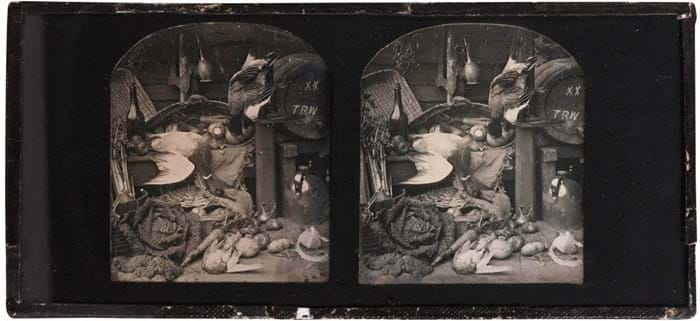
Scenes in Our Larder, a stereoscopic daguerreotype by Thomas Richard Williams, £2600 at Chiswick Auctions.
One of the greats of stereophotography was Thomas Richard Williams (1824-71). His daguerreotype Mortality, also known as Memento Mori or The Sands of Time, from the London Stereoscopic Company First Series published 1851-55, sold for a premium-inclusive £5512 at Flints in May 2020.
Another still-life image from the First Series was offered at Chiswick – this one known as Scenes in Our Larder. In two dimensions these scenes can be hard to disentangle, but, viewed in stereo, as it was intended, the various elements fill a three-dimensional space.
Signed TRW in the image and in a black passe partout mount with a label verso for Watkins & Hill Opticians, it sold at £2600 (estimate £1500-2500).
The aforementioned London firm of Negretti & Zambra is much better known today as an instrument maker.
An example of its walnut, leather and lacquered brass Magic Stereoscope came with an estimate of £2000-£3000. Dating from the mid-1850s, this was among the most deluxe products in the Negretti & Zambra range, having two separate positions for the stereograph and no fewer than four pairs of lenses. Complete, and one of only a handful of examples known to commerce (only three have come to auction in the last 25 years), it went just over hopes at £3200.
See facing page for a telescope by Negretti & Zambra sold in a separate auction.
Handy for Kromograms
This was one of a number of rare stereoscopic viewers in the sale.
Another hard-to-find example is the Ives Kromoskop, a patent device of mahogany and brass construction for viewing specially produced black and white ‘Kromograms’ in colour.
Labelled for the Photochromoscope Syndicate of 121 Shaftesbury Avenue, this example was in great condition, boxed and complete with three colour filters, Kromogram glass stereo positive views (titled Apple Blossom, Flower Beds in Regents Park, Hampton Court: Flower Beds and Garden Wall and Warwick) plus a maker’s instruction manual and a list of available Kromograms dated December 1897. The hammer price was £2200.
Eminent Scottish inventor
A kaleidoscope made by Philip Carpenter to Dr Brewster’s patent had a guide of £2000-£3000 and got away at £1900.
The eminent Scottish inventor and scientist, Sir David Brewster, invented the kaleidoscope in 1815 while conducting experiments on light polarisation and chose the Birmingham achromatic lens developer, Philip Carpenter, as the sole manufacturer of these instruments. Dating to c.1820, this example in its 7in (18cm) mahogany case comes with 11 discs of various coloured objects.
More competition emerged for an 18th century anamorphoscope.
Paintings of this type, that require a cylindrical mirror to view, were popular from the 17th century, both a ‘parlour game’ entertainment or as a way of viewing images that might otherwise have been controversial.
Famously, many were made depicting the Young Pretender after the 1745 Jacobite rebellion after which the likeness of the Bonnie Prince was outlawed.
This 18th century example, with its original cast pewter mirror was offered together with five images (on paper backed onto a mahogany support) of a peacock, a ram, a horse and two gentleman. Estimated at an appealing £400-800, bidding reached £4600.
One-piece handset telephone
An early example of the Ericsson No 16 telephone – the world’s first telephone with a one-piece handset – was expected to bring £3000-£5000 and did get away at £2800.
Perhaps the most desirable of all the ‘skeletal’ models, this example has the swing-arm separate transmitter-receiver. It was produced from 1884 for just six years. In original condition, still having its line cord, junction box and the lightening-protector plug, it was formerly part of the Mick Juanneau collection.
Sold at £2400 was an early telephone receiver of the ‘butter stamp’ type.
First created c.1877 and so-called as they resembled the wooden stamps used at the time in the home dairy, they used permanent magnets rather than the electro-magnets of the very first telephones.
This example, an early type from c.1880 perhaps made by Siemens, was fashioned in walnut and nickelled brass and was complete with the mechanism housed in the base and a screw-in ‘daffodil’ form trumpet.


